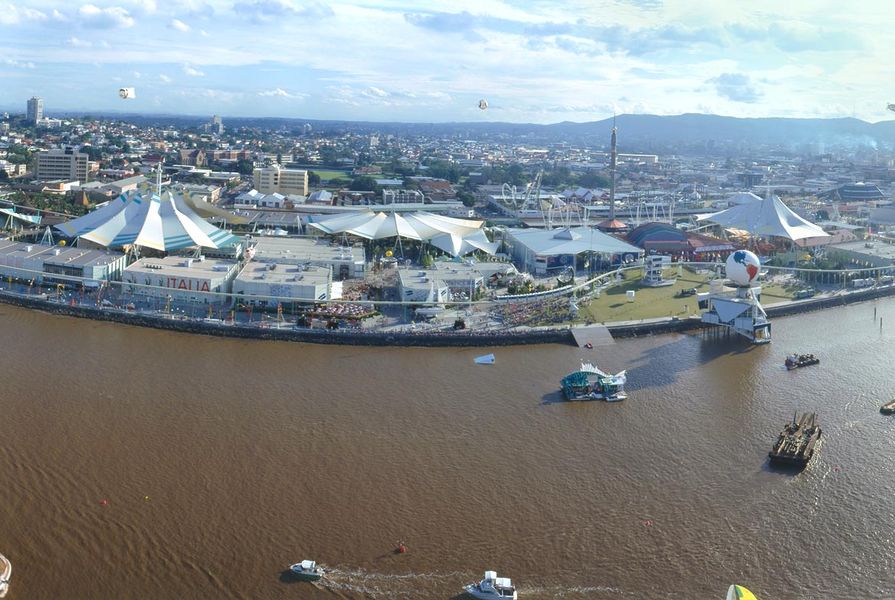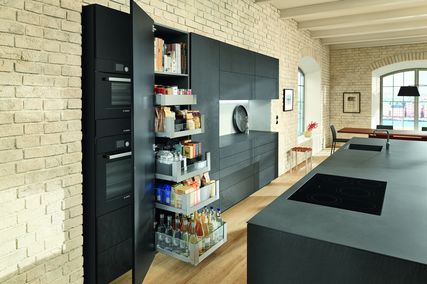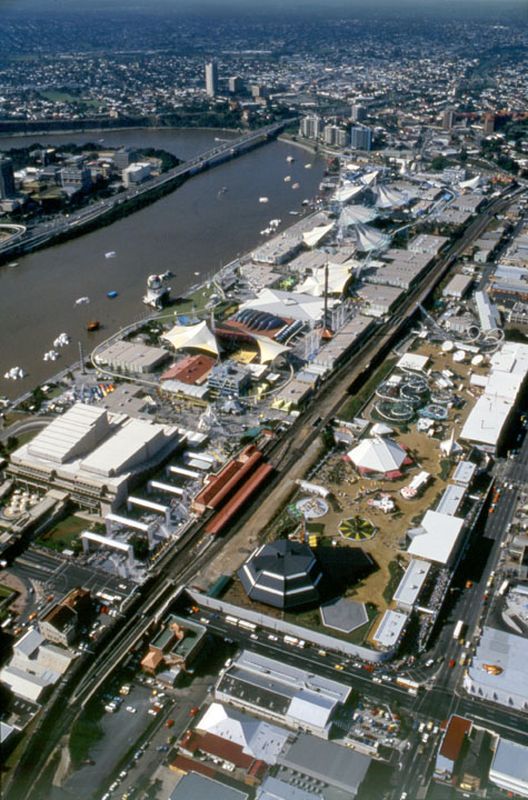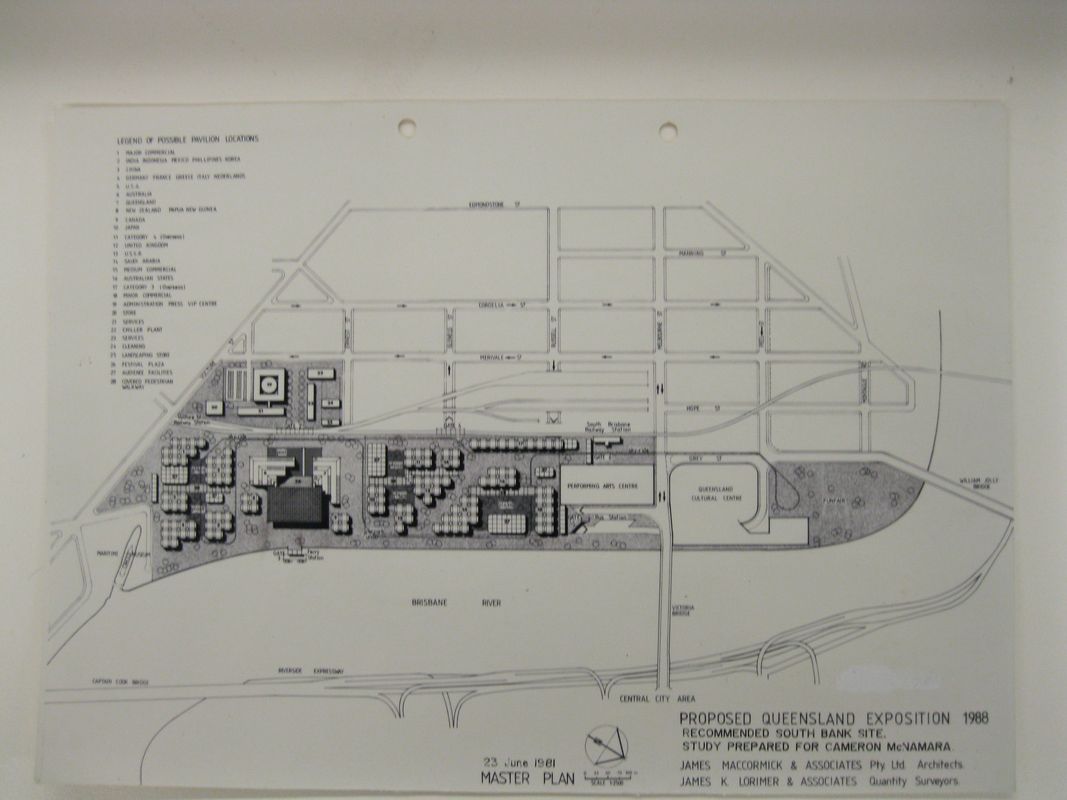Brisbane’s Expo 88 was opened by Queen Elizabeth II on 30 April 1988. It was the culmination of a vision architect James Maccormick had spent eight years bringing to fruition.
Dubbed “the man who dreamed up Expo,” Maccormick was principal architect of the Commonwealth Department of Works between 1963 and 1969. He also designed Australia’s pavilion at the 1967 expo in Montreal, the 1970 expo in Osaka and the 1974 expo in Spokane in the US state of Washington.
An aerial view of Expo 88
Image: Russell Brown/Queensland State Archives
Speaking to Foundation Expo 88 on the 25th anniversary of the ’88 Expo, Maccormick said the idea for an expo in Brisbane was germinated in the American city. “The idea really started when I spoke to the mayor of Spokane.”
“I said, ‘how can a small city like yours have an expo?’ He said, ‘well we had all these blighted slum areas close to the city and we had to get rid of them.’ The architects all banded together. Ten of them divided the river up into sections and each had a go at planning an art gallery, a museum and other things like that.”
In 1976, while he was university architect at the University of Queensland, Maccormick formed the Brisbane Riverbanks subcommittee within the Australian Institute of Architects, which began to investigate various ways to regenerate the parts of riverfront in Brisbane. The committee, however, disbanded after six months.
“I thought, heck, I’d like to have done something with my section of the river which was Kangaroo Point. What can you put there, I thought? An Expo!”
A early proposal for an expo at Kangaroo Point by James Maccormick.
Image: State Library of Queensland
He drew a series of sketches for an expo on the Kangaroo Point site, which was published in the Courier Mail and the Canberra Times. It instigated more than half a decade of discussions with governments and the chamber of commerce bringing a World Expo to Brisbane to coincide with the bicentenary of Australia.
The approval finally came in 1983. In an interview with the State Library of Queensland, Maccormick recalled the serendipitous circumstances surrounding the approval.
“[Prime Minister] Malcolm Fraser had hurt his back on the farm and had to go into medical treatment for some months. While he was away, Doug Anthony was Acting Prime Minister.
“There was an immediate approval. We got it quite by chance after something like eight years of trying.
“It was a marvellous thing. Not only did we have an expo here [in Brisbane] but it was the celebration of the bicentennial at the same time.”
Following the approval, a 40-hectare site in South Brisbane, which later became South Bank, was chosen for the expo. The linear site stretched between the Robin Gibson-designed cultural precinct in the north and the Maritime Museum in the south
Maccormick joined forces with Graham Bligh to form Bligh Maccormick 88 and the joint venture was appointed master architects for the project.
Original masterplan for the Expo 88 site by Bligh Maccormick.
Image: State Library of Queensland
“I was a small-timer as far as a the practice was concerned,” Maccormick said. “I realized that we would have to put a deal together to get the job. I had a friend Graham Bligh who had a very large practice, but no experience in expos. I had the expo experience, he had the resources.”
In a review of the Expo 88’s architecture, Michael Keniger described the built form as comprising a series of “eight giant tension structures or sun sails [that] evoke a festive spirit and mark the special and temporary nature of the site.
“In this they are remarkably successful as their tent-like forms recall circuses and show grounds without offering any sense of confinement or enclosure.
“From the city their profile seems governed by the silhouette of the hills beyond.”
At night, “the sky sails provide a rippling cascade of fairy lights and serve as giant projection screens.”
Expo 88 also included the Australian pavilion designed by Ken Woolley and the Queensland pavilion by Robin Gibson, as well as a monorail, a pink submarine and a popular South Pacific Village that appeared as if “verging towards a Gilligan’s Island set.”
The expo, themed “Leisure in the age of technology,” was open for six months and attracted more than 15 million visitors. It is widely credited as the event that delivered Brisbane’s “coming of age.” When it opened, Maccormick appeared on the cover of the Sun Magazine as “The man who dreamed up Expo.”
He later received correspondence from a friend who said, “You must be very proud now that your baby has been slapped on the bum and is yelling its head off. For your perseverance, tenacity and patience. Congratulations!”
Maccormick formed his own practice, James Maccormick and Associates, following the opening of the expo and retired in 2011.
He was appointed a Member of the Most Excellent Order of the British Empire following his contribution to Expo 67 in Montreal. In 2013, he was awarded a Medal of the Order of Australia (OAM) for services to architecture.























